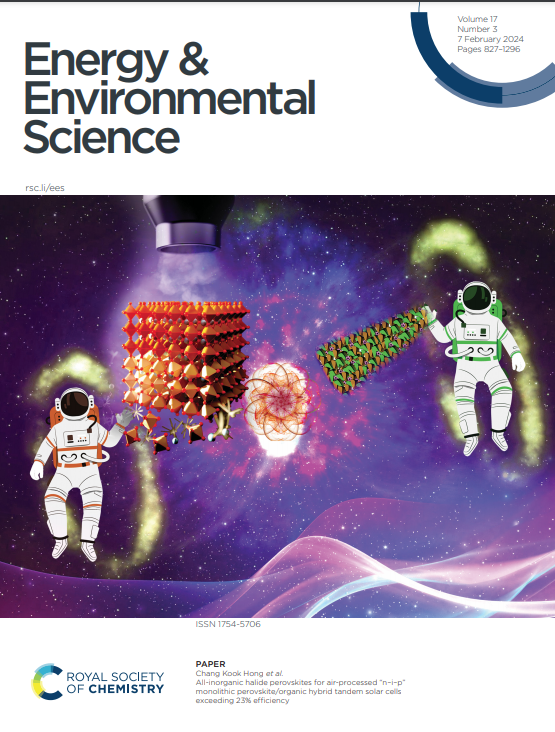计算加速发现混合金属化合物的化学环燃烧和超越
IF 30.8
1区 材料科学
Q1 CHEMISTRY, MULTIDISCIPLINARY
引用次数: 0
摘要
与单金属化合物相比,混合金属化合物,如混合金属氧化物和氮化物,在组成、结构、氧化还原和表面性能方面具有高度的通用性。这种多功能性为清洁能源转换和可持续化学品生产的应用提供了令人兴奋的机会。然而,由于材料设计空间巨大而复杂,有效地确定最佳组合仍然是一个重大挑战。这一观点讨论了高通量计算和数据科学工具如何改变混合金属化合物的合理设计,以用于燃烧以外的化学环应用。具体应用包括化学循环空气分离,基于氧化还原的二氧化碳和水分解,NH3合成和氧化还原活化的二氧化碳吸附剂等。我们的目标是说明高通量密度泛函理论(DFT)计算,结合机器学习和实验验证,如何加速材料筛选和优化,从而实现对大量化合物族的有效探索。最后,我们讨论了未来的发展趋势,旨在提高化学环载体发现的效率和准确性。本文章由计算机程序翻译,如有差异,请以英文原文为准。
Computationally Accelerated Discovery of Mixed Metal Compounds for Chemical Looping Combustion and Beyond
Compared to their monometallic counterparts, mixed metal compounds, such as mixed metal oxides and nitrides, are highly versatile in their compositional, structural, redox, and surface properties. This versatility unlocks exciting opportunities for applications in clean energy conversion and sustainable chemical production. However, efficiently identifying optimal compositions remains a significant challenge due to the vast and complex material design space. This perspective discusses how high-throughput computational and data science tools are transforming the rational design of mixed metal compounds for chemical looping applications beyond combustion. The specific applications covered include chemical looping air separation, redox-based CO2 and water splitting, NH3 synthesis, and redox-activated CO2 sorbents, among others. We aim to illustrate how high-throughput density functional theory (DFT) calculations, combined with machine learning and experimental validation, have accelerated material screening and optimization, enabling the efficient exploration of vast compound families. Finally, we discuss future trends aimed at improving the efficiency and accuracy of chemical looping carrier discovery.
求助全文
通过发布文献求助,成功后即可免费获取论文全文。
去求助
来源期刊

Energy & Environmental Science
化学-工程:化工
CiteScore
50.50
自引率
2.20%
发文量
349
审稿时长
2.2 months
期刊介绍:
Energy & Environmental Science, a peer-reviewed scientific journal, publishes original research and review articles covering interdisciplinary topics in the (bio)chemical and (bio)physical sciences, as well as chemical engineering disciplines. Published monthly by the Royal Society of Chemistry (RSC), a not-for-profit publisher, Energy & Environmental Science is recognized as a leading journal. It boasts an impressive impact factor of 8.500 as of 2009, ranking 8th among 140 journals in the category "Chemistry, Multidisciplinary," second among 71 journals in "Energy & Fuels," second among 128 journals in "Engineering, Chemical," and first among 181 scientific journals in "Environmental Sciences."
Energy & Environmental Science publishes various types of articles, including Research Papers (original scientific work), Review Articles, Perspectives, and Minireviews (feature review-type articles of broad interest), Communications (original scientific work of an urgent nature), Opinions (personal, often speculative viewpoints or hypotheses on current topics), and Analysis Articles (in-depth examination of energy-related issues).
 求助内容:
求助内容: 应助结果提醒方式:
应助结果提醒方式:


